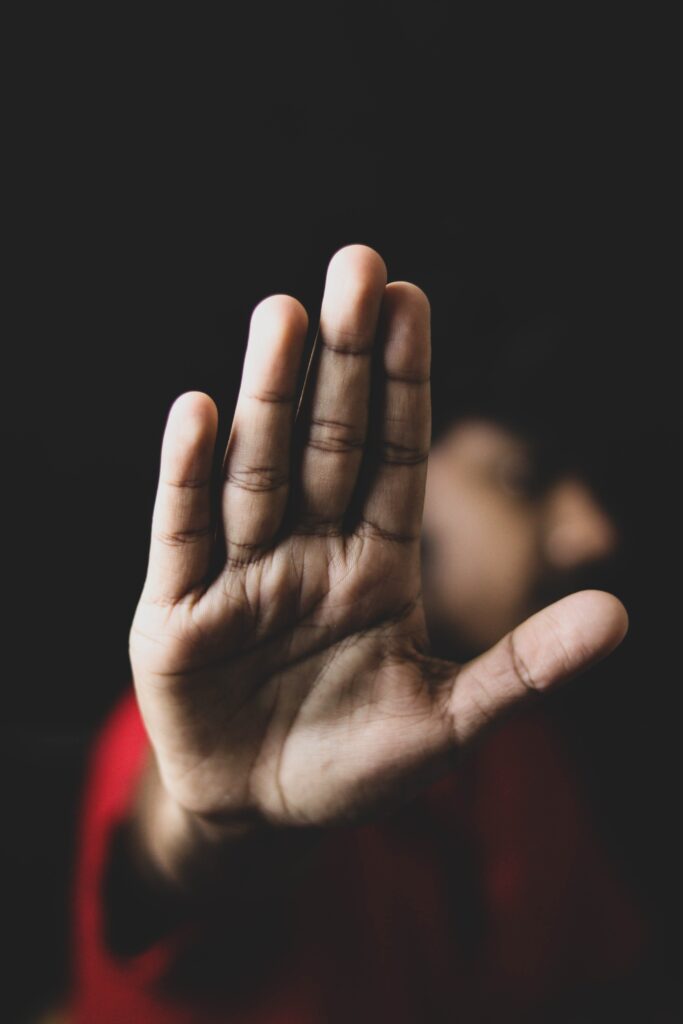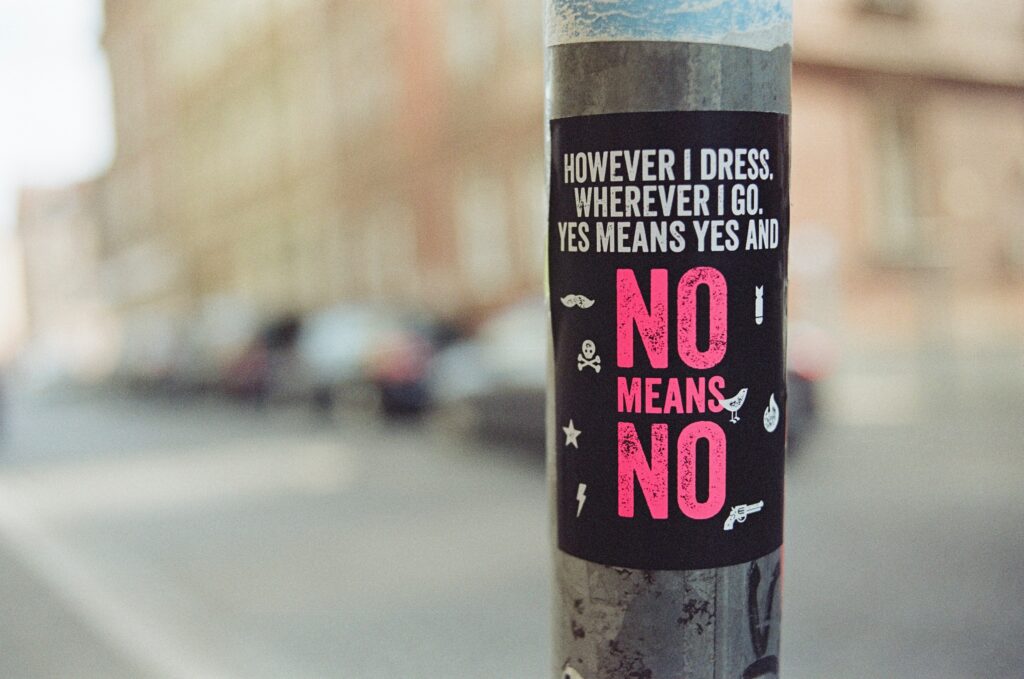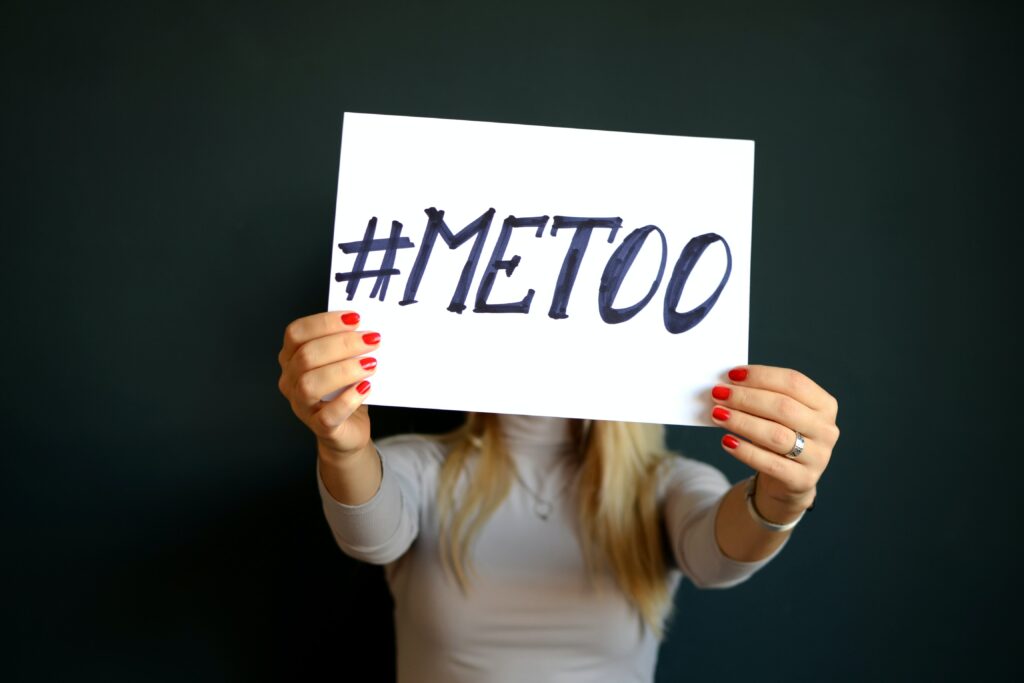The power of words extends far beyond the printed page, the intersection of free speech and harassment presents a critical and often contentious debate. We aim to provide an informative and balanced perspective, navigating the intricate relationship between the right to express oneself and the responsibility to respect others.

Defining Harassment
Harassment is repetitive and unwanted behavior’s intended to intimidate, annoy, or alarm another person. It can manifest in various forms, including verbal, written, or physical actions, and often creates a hostile environment for the victim. Harassment commonly targets individuals based on race, gender, religion, sexual orientation, or other protected characteristics.
The Concept of Free Speech
Free speech is a fundamental right in many democratic societies, allowing individuals to express their opinions and ideas without government censorship or interference. It serves as a pillar of democracy, fostering open dialogue, the exchange of diverse viewpoints, and the pursuit of knowledge. However, free speech rights are not absolute and may be subject to limitations to protect other vital societal interests.
Significance of the Debate
The debate on whether harassment qualifies as free speech is pivotal, emphasizing the delicate balance between individual expression rights and the crucial need to prevent harm and protect well-being. This discussion gains complexity when free speech intersects with actions causing distress, damage, or rights infringement. It’s a nuanced dialogue about harmonizing free expression protection with the crucial goal of preventing harassment and its adverse impacts. This balance is not only a legal and ethical dilemma but also a societal one, reflecting on our values and the kind of environment we wish to cultivate in both physical and digital spaces.
Historical Context
Origins of the Free Speech Concept
The concept of free speech traces its roots to ancient civilizations where the value of open dialogue and the exchange of ideas was held in high esteem. This foundational principle was notably echoed by the Greek philosopher Socrates, who once stated, “Speak, for I am eager to hear.” These early societies, particularly in Greece, pioneered the notion of free speech as a civic virtue. This idea flourished and evolved, becoming a cornerstone in Western societies. Influenced significantly by Enlightenment thinkers, the principle of free speech expanded to emphasize individual freedoms and the importance of allowing unrestricted expression.
Early Legal Precedents
The First Amendment of the United States Constitution is a critical legal precedent in the history of free speech. It states:
“Congress shall make no law respecting an establishment of religion, or prohibiting the free exercise thereof; or abridging the freedom of speech, or of the press; or the right of the people peaceably to assemble, and to petition the Government for a redress of grievances.”
This Amendment enshrines the freedom of speech as a fundamental right, emphasizing the prohibition of government interference in the expression of ideas and opinions. It has played a pivotal role in shaping the legal and societal landscape of the United States, influencing various aspects of American life and setting a standard for other democratic societies worldwide in recognizing and protecting the freedom of speech.
Legal Framework
While free speech is a fundamental right, it is not without limitations. Certain circumstances warrant restrictions on free speech to protect critical societal interests. Some common conditions include:
Incitement to Violence
Free speech laws generally do not protect speech that directly incites or poses an immediate and clear threat of violence. Incitement to violence is considered a form of speech that can cause harm and disrupt public safety.
Defamation
Defamation refers to making false statements that harm the reputation of an individual or entity. While free speech protects opinions and certain forms of criticism, knowingly spreading incorrect information to hurt someone’s reputation may have legal consequences.
Hate Speech Laws
Different countries have different approaches to hate speech regulation. Some jurisdictions have laws limiting hate speech, mainly when it targets individuals or groups based on characteristics such as race, religion, ethnicity, or others. These laws aim to prevent the promotion of discrimination, hostility, and violence.
Laws Against Harassment
Legal frameworks include specific laws that address various forms of harassment to protect individuals. These laws may vary by jurisdiction but commonly include:
Anti-Discrimination Laws
Anti-discrimination laws prohibit harassment based on characteristics such as race, gender, religion, disability, or sexual orientation. These laws aim to foster a fair and inclusive society by preventing discriminatory behavior’s and ensuring equal treatment.
Cyberbullying Laws
With the advent of digital communication, many jurisdictions have enacted specific laws to combat cyberbullying. These laws aim to protect individuals from online harassment, threats, or intimidation through electronic means.
Stalking Laws
Stalking involves persistent and unwanted attention or behavior’s that causes fear, distress, or harassment to a person. Laws against stalking are in place to safeguard individuals from such intrusive and harmful conduct, ensuring their safety and well-being.
Modern Cases
Landmark Supreme Court Cases
Virginia v. Black (2003)
Cross-burning, historically associated with the Ku Klux Klan in the United States, is the act of burning a cross as a symbol of racial intimidation and hatred. It has been used as a means to terrorize and oppress African Americans and other targeted groups.
In the Supreme Court case of Virginia v. Black (2003), the legality of cross-burning as a form of expression was scrutinized. The Court’s ruling in this case was pivotal. It concluded that cross-burning, when done with the intent to intimidate, could be classified as a “true threat.” As such, it is not protected under the First Amendment, which guarantees freedom of speech. This ruling was significant because it acknowledged that while freedom of speech is a fundamental right, it does not extend to forms of expression that are intended to threaten or intimidate others. Thus, the decision in Virginia v. Black (2003) underscored the principle that the right to free speech has its limits, especially when it involves actions that could inflict harm or incite fear in others.
Elonis v. United States (2015)
In the case of Elonis v. United States (2015), the Supreme Court dealt with a situation involving Anthony Elonis, who had posted several statements on Facebook that were perceived as threatening. These posts included language that suggested violence against his estranged wife, law enforcement officers, and even a kindergarten class. The specific content of these posts was not just aggressive but also contained explicit references to acts of violence, which raised serious concerns about their nature as genuine threats.
The key issue was whether the standard for conviction should be based on how the messages were perceived by others (an objective standard) or on Elonis’s own intent and understanding of his posts (a subjective standard). The Court ultimately ruled that to convict someone for making threats, it’s not enough to show that a reasonable person would find the language threatening; there must be proof that the speaker actually intended to communicate a threat. This decision highlighted the challenges in distinguishing between protected speech and genuine threats in the context of online communication, especially when considering the subjective intent of the person making the statements.
Social Media and Online Harassment
Twitter’s Harassment Policy
Social media platforms like Twitter have faced significant challenges in addressing online harassment. Twitter has implemented policies to combat harassment, including guidelines against abusive behavior’s, threats, and targeted harassment.
From Twitter’s harassment policy:
We consider targeted behavior as malicious, unreciprocated, and intended to humiliate or degrade an individual(s). We prohibit the following behavior on the platform:
- Sharing multiple Posts, over a short period of time, or continuously posting replies with malicious content, to target an individual. This includes accounts dedicated to harassing an individual or multiple individuals.
- Mentioning or tagging users with malicious content.
How X handles abuse and harassment | X Help (twitter.com)
This quote highlights Twitter’s commitment to creating a safer online environment by explicitly prohibiting various forms of harassment and abuse, and it reflects the platform’s effort to balance freedom of expression with the need to protect its users from harmful content.
Gamergate Controversy
The Gamergate controversy began in August 2014, initially centered around a personal attack against game developer Zoë Quinn. The catalyst was a blog post by Quinn’s former boyfriend, Eron Gjoni, known as “The Zoe Post.” This post provided a detailed account of their relationship and breakup, including personal chat logs, emails, and text messages. It falsely implied that Quinn had received favorable reviews for her game Depression Quest in exchange for a sexual relationship with Nathan Grayson, a reporter for gaming websites. However, it was later acknowledged that Grayson never reviewed Quinn’s games and his only article mentioning them was published before their relationship began. Despite the lack of evidence, online users used this blog to accuse Quinn, without substantiation, of trading sex for professional advancement.
Following the blog post, Quinn and her family were subjected to a virulent and often misogynistic harassment campaign. Initially labeled as “Quinnspiracy,” the controversy later adopted the hashtag “#Gamergate.” Actor Adam Baldwin coined this term on August 27, 2014, helping to spread it through his substantial Twitter following. The hashtag gained further prominence through right-wing journalist Milo Yiannopoulos on Breitbart News. The harassment campaign, including doxing (publishing private information), rape threats, and death threats, was coordinated via Internet Relay Chat (IRC) and spread over imageboards and forums like 4chan and Reddit.
The Gamergate controversy brought significant attention to the issue of online harassment, particularly targeting women in the gaming industry, and sparked discussions on the responsibilities of online platforms in combating harassment and protecting users.
The Gray Area
Ambiguous Cases
Criticism vs. Harassment
Distinguishing between legitimate criticism and harassment can be a challenging task. There are cases where it becomes difficult to draw a clear line between expressing an opinion and engaging in targeted harassment. Assessing the intent and impact of communication becomes essential in determining whether it falls within free speech or crosses into harmful harassment.
Political Discourse
Political discourse often involves passionate debates, but there are instances where the boundaries of acceptable expression could be more precise. It can be challenging to differentiate between robust political discourse and forms of speech that incite violence or target individuals based on characteristics. Striking a balance between the right to express political views and the need to prevent harm requires careful consideration.
Balancing Free Speech and Protection
Public vs. Private Platforms
Free speech enjoys broader protection in public platforms, such as government-owned spaces or streets. In contrast, private platforms have the autonomy to establish rules and guidelines for user behavior’s. Determining the appropriate level of free speech protection on private media while safeguarding against harassment raises complex questions about the role of private entities in regulating speech.
Role of Moderation
Moderation on online platforms plays a vital role in maintaining a balance between free speech and protection from harassment. Defining the boundaries of acceptable speech and implementing consistent moderation policies can be difficult. Achieving the right balance involves addressing concerns about censorship while ensuring that platforms take proactive measures to mitigate harassment and foster civil discourse.
Psychological Impact
Emotional and Psychological Consequences
Online harassment can have severe emotional and psychological consequences for its targets. The experience of enduring persistent abuse, threats, or hateful content can result in increased stress, anxiety, depression, and a diminished sense of safety and well-being. The psychological impact of online harassment underscores the importance of addressing and preventing such behavior’s.
Effects on Targets of Harassment
Individuals subjected to online harassment may face various detrimental effects, including social isolation, issues with self-esteem, and fear of engaging in public discourse. The persistent nature of online harassment and its potential to reach a broad audience can amplify these effects and make it challenging for targets to escape the harm inflicted upon them.
Studies on Online Harassment
Numerous studies have examined the prevalence and impact of online harassment. Researchers have explored its connection to mental health, targeting specific demographics, and how online platforms can mitigate its effects. These studies contribute to a deeper understanding of the psychological implications of online harassment and inform efforts to address and prevent such behavior’s.

Social and Cultural Aspects
Intersectionality and Harassment
Understanding online harassment requires recognizing the concept of intersectionality. Individuals who belong to marginalized groups may experience harassment that targets multiple aspects of their identity, such as race, gender, sexual orientation, or disability. Acknowledging the intersectional nature of harassment is essential for addressing its underlying causes and supporting those disproportionately affected.
Online Hate Communities
Online hate communities refer to groups or platforms where individuals gather to propagate hate speech and engage in coordinated harassment. These communities can amplify the dissemination of harmful ideologies and contribute to normalizing online harassment. Examining the dynamics of online hate communities is crucial for implementing effective strategies to counteract their influence.
Trolling Culture
Trolling culture involves engaging in deliberately provocative or disruptive behavior’s online to provoke emotional reactions from others. While some forms of trolling may be harmless or intended as humor, others can escalate into harassment. Analyzing the culture of trolling helps shed light on the motivations behind online harassment and the need to foster a more respectful and constructive online environment.
Counter Arguments
Free Speech Advocates
Advocates for free speech raise concerns about excessive regulation, emphasizing the importance of protecting even unpopular or offensive speech. They argue that restricting speech, even in cases of harassment, could establish a dangerous precedent that jeopardizes the fundamental right to express diverse viewpoints.
Slippery Slope Argument
Opponents of regulation employ the slippery slope argument, suggesting that regulating online harassment may pave the way for broader censorship and the suppression of legitimate speech. They contend that defining and enforcing limits on speech is subjective and could stifle dissenting opinions or minority voices.
Importance of Unpopular Speech
Supporters of free speech assert that safeguarding unpopular or controversial speech is crucial for a healthy democratic society. They argue that allowing a wide range of expression, even if it includes offensive or harassing speech, promotes open dialogue, challenges prevailing norms, and facilitates social progress.
Ethical Considerations
Responsibility of Platforms
Critics argue that online platforms bear a moral responsibility to combat harassment on their media actively. They contend that platforms should prioritize user safety over absolute free speech, implementing robust moderation policies and proactive measures to address harassment and protect users.
Harmful Speech vs. Protected Expression
Another ethical consideration is discerning the difference between harmful speech and protected expression. Opponents of unrestricted free speech argue that certain forms of speech, such as targeted harassment or incitement to violence, fall outside the realm of protected expression. They advocate for clear guidelines and enforcement mechanisms to prevent the dissemination of harmful speech while preserving legitimate expression.
Case for Regulation
The Need for Stricter Laws
Proponents of regulation argue that existing laws may not adequately address the unique challenges of online harassment. They contend that specific legislation targeting online harassment is necessary to provide more precise definitions, stronger deterrents, and improved mechanisms for reporting and addressing instances of harassment.
International Perspectives
International perspectives on online harassment reveals diverse approaches to regulation. Some countries have enacted stringent laws to combat online harassment, while others rely on self-regulation or prioritize free speech rights. Understanding different regulatory methods can inform discussions on best practices and potential strategies to address online harassment effectively.
Proposed Legislation
Advocates have called for legislation explicitly addressing online harassment, with proposals ranging from criminalizing specific forms of online harassment to increasing platforms’ accountability for the content shared on their media. These proposed measures aim to balance protecting individuals from harm and upholding principles of free speech.
Current Enforcement Measures
Content Moderation
Content moderation involves monitoring and regulating user-generated content on online platforms. It encompasses enforcing community guidelines and policies to ensure content aligns with the platform’s standards. Content moderation teams review reported ranges, remove violations, and take actions such as issuing warnings, suspending accounts, or permanently banning users.
Reporting Mechanisms
Reporting mechanisms enable users to flag and report harassment or abusive content. Online platforms provide reporting tools that allow users to notify moderators about inappropriate behaviour or content. These reports serve as a crucial means of identifying and addressing instances of harassment, aiding platforms in taking appropriate enforcement actions.
Role of Technology
Technology plays a significant role in enhancing enforcement measures against online harassment. Machine learning algorithms and artificial intelligence tools automatically detect and filter harmful content. These technologies assist in identifying patterns of harassment, hate speech, or other forms of abusive behaviour, empowering platforms to respond more effectively.
The Role of Social Media
Influence of Social Media Platforms
Social media platforms exert substantial influence over online interactions and discourse. Their algorithms and design choices can impact the spread and visibility of content, potentially amplifying harassment or fostering positive engagement. Understanding the influence of social media platforms is vital for implementing effective measures to address online harassment.
Responsibility of Tech Companies
Tech companies operating social media platforms bear significant responsibility for addressing online harassment. They are responsible for developing and implementing policies, guidelines, and enforcement measures to protect users from harassment and foster a safe online environment. The decisions and actions taken by tech companies in response to online harassment incidents can significantly impact user experiences.
Public Pressure and Change
Public pressure and advocacy are critical in driving change within social media platforms. When users, activists, and organizations raise awareness about online harassment and demand improved enforcement measures, they can compel tech companies to take action. Public pressure can potentially influence policy changes, algorithmic adjustments, and the implementation of more robust measures to combat online harassment.
Case Studies of Successful Action
#MeToo Movement

The #MeToo movement is an illustrative instance of effective action against online harassment. It originated as a social media campaign encouraging individuals to share their experiences of sexual harassment and assault. The movement garnered widespread attention and sparked public discourse, resulting in heightened awareness, increased accountability, and legal consequences for perpetrators. The success of the #MeToo movement exemplifies the potency of collective action and social media in addressing online harassment and driving societal transformation.
Online Activism
Online activism has played a pivotal role in combating online harassment. Activists and advocacy groups leverage social media platforms to raise awareness, organize campaigns, and advocate for policy changes. Through online activism, individuals and organizations have successfully exerted pressure on technology companies, leading to improvements in content moderation, policy revisions, and enhanced reporting mechanisms. Online activism has proven instrumental in amplifying voices, mobilizing support, and effecting positive change in the battle against online harassment.
Community-Led Initiative
Community-led initiatives have proven to be effective in addressing online harassment within specific online communities. These initiatives involve community members taking proactive measures to establish and enforce guidelines, foster a positive online culture, and support victims of harassment. By creating safe spaces, promoting respectful dialogue, and providing resources for reporting and intervention, community-led initiatives empower individuals to combat online harassment within their communities.
Analyzing case studies of successful action, such as the #MeToo movement, online activism, and community-led initiatives, offers valuable insights into the strategies and approaches that have yielded positive outcomes in tackling online harassment. These examples exemplify the power of collective action, the influence wielded by social media, and the significance of community engagement in effecting meaningful change.
Ethical Considerations
Balancing Rights
Finding the right balance between protecting individuals from online harassment and upholding the principles of freedom of expression is a complex ethical challenge. It requires careful deliberation and ethical decision-making to ensure both rights are respected and supported online.
Ethical Responsibility of Individuals
Individuals bear an ethical responsibility to engage in online behaviour that respects the dignity and well-being of others. It includes refraining from participating in or promoting harassment, hate speech, or any form of abusive conduct. Acting ethically online involves fostering constructive dialogue, practising empathy, and actively opposing and reporting instances of harassment.
Role of Education
Education plays a vital role in ethically addressing online harassment by promoting digital literacy and teaching responsible online behaviour, navigating online spaces responsibly, identifying and responding to harassment, and cultivating respectful online interactions. Education initiatives also raise awareness about the consequences of online harassment, promote empathy, and foster a culture of responsible digital citizenship.
Summary of Key Points
Recap of Harassment vs. Free Speech
It is essential to distinguish between online harassment and free speech. While free speech is a fundamental right, it does not protect or justify harmful or abusive behaviour. Online harassment involves targeted and persistent actions that infringe upon the rights and well-being of others.
Legal Landscape
Laws and regulations concerning online harassment vary across different jurisdictions. Many countries have implemented legal measures to address online harassment, including criminalizing specific forms of harassment and providing legal avenues for victims. However, challenges in enforcement and gaps in legislation remain significant obstacles.
Social and Psychological Impacts
Online harassment can have severe social and psychological impacts on individuals. It often leads to emotional distress, anxiety, and depression and can even result in self-harm. The pervasive nature of online harassment underscores the need for effective measures to protect individuals’ mental well-being and mitigate the adverse effects of such behaviour.
Debates and Controversies
Debates and controversies surround the appropriate scope of intervention in addressing online harassment. Striking a balance between the need for effective enforcement measures and concerns about potential censorship and chilling effects on free expression is an ongoing subject of discussion and debate.
Frequently Asked Questions (FAQs)
Does the First Amendment protect harassment?
Freedom of speech is a constitutional right; it does not save harassing or abusive behaviour.
How do you differentiate between criticism and harassment?
Criticism involves constructively expressing disapproval or feedback, while harassment entails persistent, unwanted behaviour that aims to intimidate, degrade, or harm an individual.
What are the psychological effects of online harassment?
Online harassment can have significant psychological effects, including increased stress, anxiety, depression, lowered self-esteem, and social isolation.
What actions can individuals take when faced with harassment?
When faced with harassment, individuals can document incidents, block or report the harasser, seek support from friends or family, report to authorities or platform administrators, and consider legal recourse if necessary.
How can social media platforms address harassment effectively?
Social media platforms can address harassment effectively by implementing strong content moderation policies, providing precise reporting mechanisms, promptly investigating and taking action on reported cases, promoting user education on online safety, and fostering an inclusive online community.
Conclusion
True freedom of speech is about the exchange of ideas and opinions in a respectful manner, not about causing harm or distress to others. As John F. Kennedy said, “The rights of every man are diminished when the rights of one man are threatened.”







































